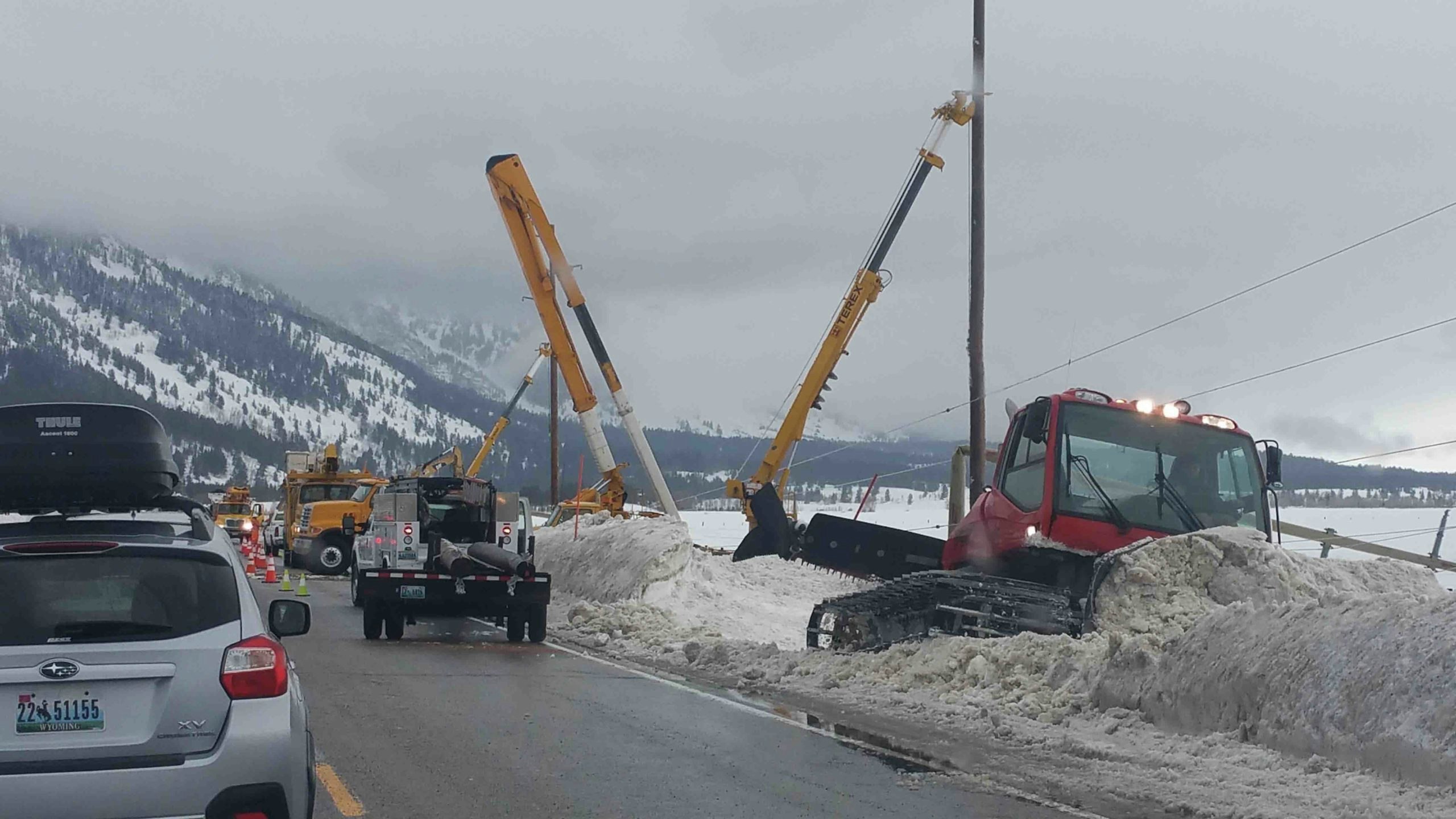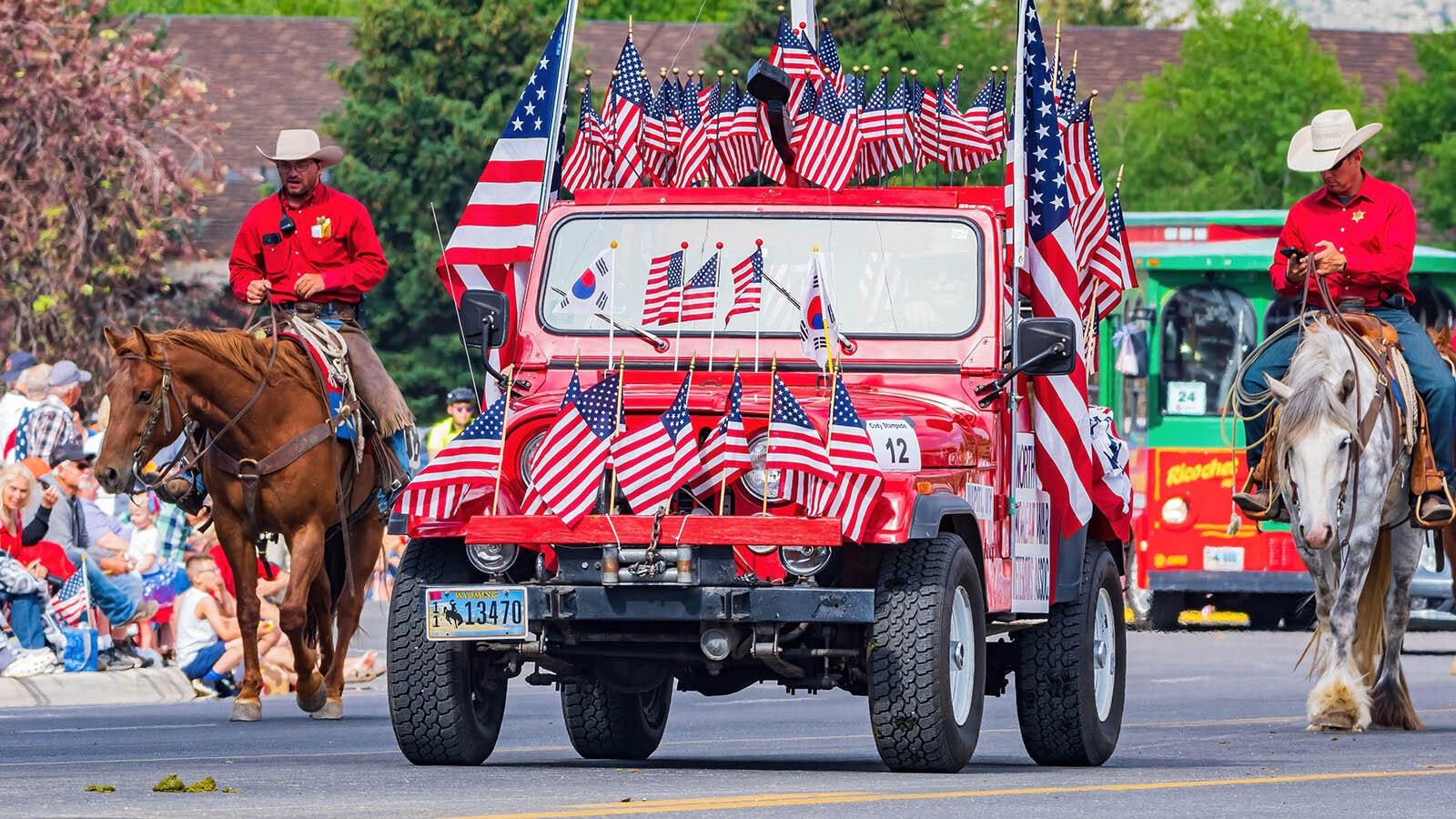A plan to house energy company workers in Jackson so they can rapidly respond to power outages has been approved by Teton County Commissioners.
Approval of the plan comes nearly six years after workers for the Lower Valley Energy Co-Operative (LVE), forced to live across Teton Pass from Jackson by high housing prices, were unable to respond to a major power outage in the community.
Commissioners on May 17 approved the sketch plan to allow LVE to build 17 single family houses on its land.
Approval of the plan for the deed-restricted homes south of Jackson off of U.S. Highway 89 was approved only after commissioners limited the proposed size of the home lots to 12,000 square feet.
The housing plan follows a massive blowdown in February 2017 in which 17 steel transmission lines in Teton Village snapped due to heavy winds, ice and snow.
The outage cut off power to the ski area and surrounding neighborhoods for nearly five days, according to Brian Tanabe, LVE communication manager, impacting thousands of people and prompting the county to declare a state of emergency.
Due to avalanches and road closures, the utility could not get its largely Afton-based crew into the county, requiring the company to team up with five other utility companies from inside and outside Wyoming to mitigate the emergency.
The desire to have more emergency response employees living in Teton County, as well as offering housing as an incentive to attract and retain workers, was a driving force behind the project, said Co-Op CEO Jim Webb.
Most of LVE’s 75 employees live in Star Valley, Webb said, adding only one full-time and one part-time lineman actually live in Teton County.
Though the utility does have a condo for on-call emergency employees, most emergencies require a crew to fix the problem, he added.
Employee housing would also be helpful in attracting new employees who are interested in settling down and starting a family, Webb added. Most of LVE’s employees stay long-term, he added, with one employee recently retiring after 47 years and another retiring after 33.
LVE is working with other agencies to help meet housing needs. Under terms of the deed restrictions, the housing would be reserved for local employees who work more than 30 hours per week for a local business or earn 75% of their income locally. Residents also would not be allowed to own real estate within 150 miles.
Webb said that the need to provide employee housing has become a necessity in Teton County.
“I don’t want to be a landlord and didn’t want to be a land developer. I’m a utility guy and didn’t want to develop property,” he said. “But we’ve all been forced into these kind of situations.”
A recent Teton County housing assessment estimated a current shortage of about 5,300 housing units in the region, forcing commuters to drive from 10,750 to 17,500 miles a year to get to jobs within the town and county.
LVE board member and Wyoming Senate President Dan Dockstader, R-Afton, said the housing situation has become untenable both in Jackson and Star Valley, forcing employers to step in more often with housing assistance.
“Everything has become unaffordable,” he said. “This problem is not going to go away, so we wanted to step in and try to provide a solution.”
Working With Restrictions
Among other conditions for approval, LVE agreed to work with the Wyoming Department of Transportation to extend a fence to direct elk and other animals to a nearby underpass rather than encourage the animals to cross a busy road near the development.
Commissioners denied a request from LVE to increase the size of four of the lots for homes, noting the utility in 2020 agreed to 12,000 sq. foot lot sizes when the county approved a rezoning request that would allow the project to proceed.
Expanding the maximum lot sizes wasn’t an option at this point in the process, according to Keith Gingery, chief deputy county attorney, because the county’s land use regulations (LDRs) doesn’t allow for zoning amendments.
“This is why we don’t do conditional zoning,” Gingery said during the meeting. “Just so everybody understands because now the applicant is essentially changing their mind, and so now we have something different in front of us. And so that’s why we never, we always say ‘nope,’ the county doesn’t do conditional zoning.”
LVE is willing to work with the lot sizes, Bill Collins, president of Collins Planning Associates and consultant on the project, told Cowboy State Daily Wednesday.
“We will have to live with it and make it work,” he said.
Pushback From Neighbors
Several residents of the neighboring Little Horsethief Canyon development voiced their objections to commissioners about housing density, obstruction to wildlife migration, affordability and fears over who might be purchasing the units.
Some felt that the Co-Op failed to tell them that not all of the residents in the LVE units will be company employees.
“There are a lot of unknown to me and it’s misleading to be called Lower Valley workforce when it is in no way intended initially to be,” Little Horsethief Canyon resident Wendy Meyring told commissioners. “…The affordability question comes into play. Lower Valley Energy may be able to subsidize in some form, but how are these other entities going to handle that?”
Other neighbors expressed concern about the impact on wildlife and how the additional homes might affect traffic and overall quality of life.
Webb was forthright in his admission that the company never intended the new development to be only for LVE workers. He said the utility did not want to make employees feel like they are living in a “company town.”
To this end, he and his board have been in talks with other local agencies, including Game and Fish, Wyoming Department of Transportation and the town of Jackson, to also offer this housing for their employees.
As for concerns about affordability and whether employees would be granted the option to purchase the units, Webb said the utility is still working out the specifics. Likely, the Co-Op will offer subsidies and incentives based on years of service, along with some kind of path to ownership, though nothing at this point is set in stone.
He also noted that the properties would be built slowly over time.
Next Steps
Collins had no idea when the final plan would be ready to present to commissioners, which is the next step in the process.
“We are somewhat at the mercy of some very busy individuals,” Collins said, noting the limited availability of civil engineers and surveyor required to map out the water, sewer and roads plans.
Collins applauded the commissioners and process in general, which began in October 2019. Costs of the project so far have exceeded $75,000.
“It’s moved through the process in routine fashion,” Collins said. “The county commissioners are very supportive. They are happy to see a private company stepping forward on their own initiative and own dime.”
Dockstadter agreed that it has been a meticulous process but is moving smoothly.
“Those people in Teton County run a tight ship,” Dockstadter said, “and if it’s not exactly right, it will get tossed out.”
Right now, apart from providing the second-lowest residential electric rates of all cooperatives in the nation, the Co-Op is focused on getting ahead of the housing crunch.
“Housing is our priority right now,” Tanabe said.





